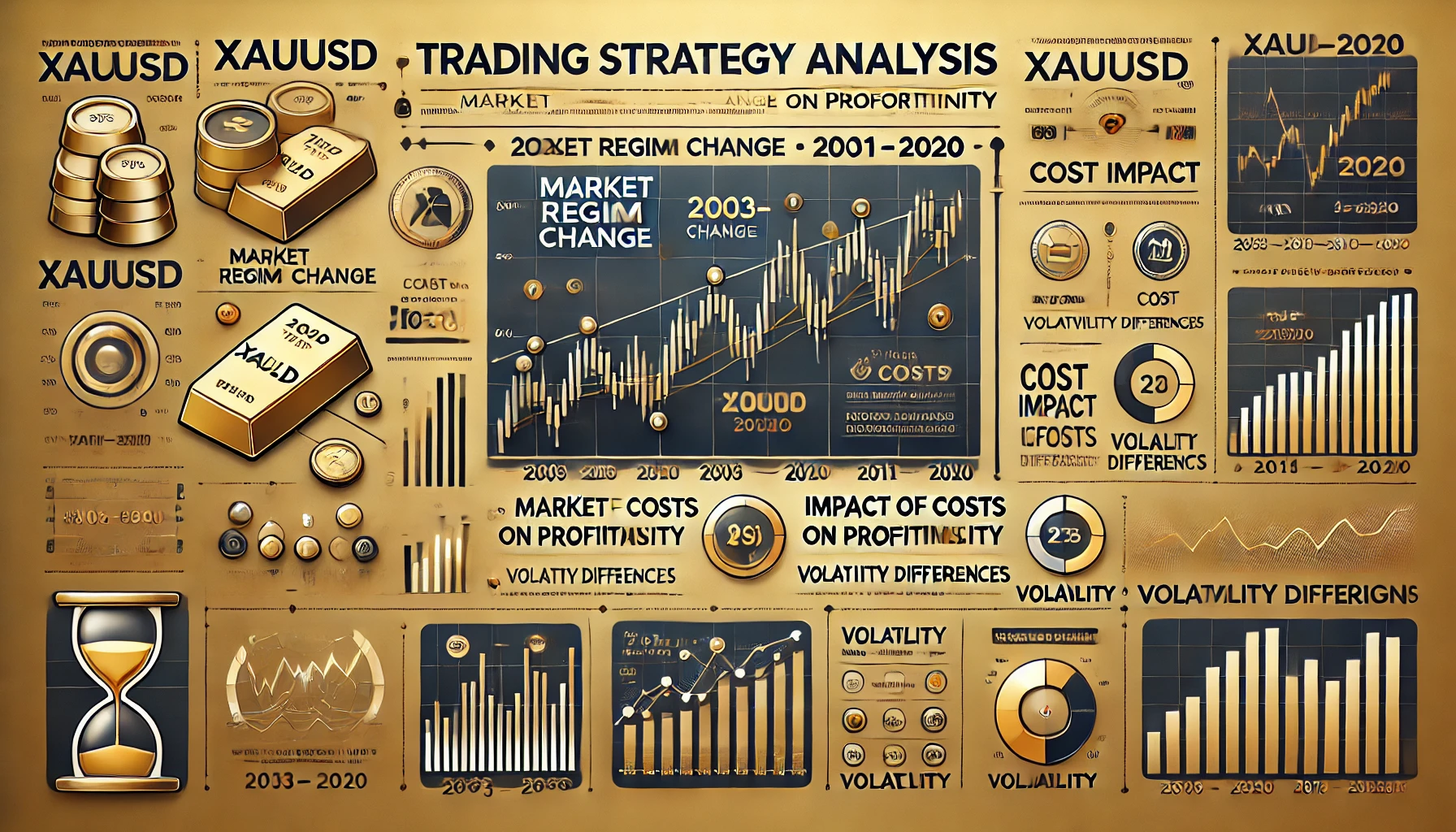Here’s a detailed analysis of the performance of the Forge of Ideas EA for XAUUSD (Gold) on the H1 timeframe:
Profitability
- Total Net Profit:
- Achieving $160,843.87 in net profit from an initial deposit of $5,000 over the testing period indicates a healthy return.
- The Profit Factor of 1.73 (gross profit of $380,464.07 vs. gross loss of $219,620.20) reflects solid profitability with a balanced risk-return tradeoff.
- Expected Payoff:
- The expected payoff of $20.52 per trade is moderate but in line with the high number of trades executed.
- Winning and Losing Trades:
- The system has a win rate of 57.88%, with average profit per trade ($83.84) slightly higher than the average loss per trade (-$66.51).
- This balance between win rate and trade size helps the EA maintain profitability.
- Largest Trades:
- The largest profit trade was $3,959.52, while the largest loss trade was -$994.26, demonstrating an effective risk-reward ratio with the largest win approximately 4x the size of the largest loss.
Risk and Drawdown
- Absolute and Maximal Drawdown:
- Absolute drawdown: $1,217.94 — very low compared to the initial deposit, showing strong capital preservation.
- Maximal drawdown: $4,712.61 (3.85%) is excellent, showcasing controlled risk relative to profitability.
- However, the relative drawdown of 35.80% indicates occasional equity dips that require monitoring.
- Risk per Trade:
- The largest consecutive losses occurred over 17 trades, but the financial impact was well-contained (-$590.09).
- The largest loss series was $2,095.64 over 10 trades, indicating a relatively mild equity draw even in clustered losses.
Efficiency
- Trade Frequency:
- Executed 7,840 trades over the test period, averaging about 2.2 trades per day, which aligns well with the H1 timeframe.
- Consistency:
- The longest winning streak was 25 trades (profit $3,295.56), and the largest consecutive profit streak yielded $6,321.47 over 10 trades.
- The system averages 4 consecutive wins vs. 3 consecutive losses, reflecting a tendency toward positive outcomes over time.
Key Observations
- Profitability vs. Trade Volume:
- The EA relies on frequent trades and a moderate win rate (57.88%) to generate its overall profit. The balance between trade frequency and average trade size appears to be well-calibrated.
- Controlled Drawdowns:
- The maximum drawdown of 3.85% in absolute terms is one of the lowest observed in similar EAs, making this system suitable for traders prioritizing capital preservation.
- Scalability:
- With a high trade count and a low average drawdown, the strategy appears scalable for larger initial deposits without a significant increase in risk.
- Risk-Reward Ratio:
- The system effectively caps losses while allowing winning trades to run longer, as evidenced by the disparity between the largest profit and largest loss trades.
Recommendations for Optimization
- Improve Expected Payoff:
- While the strategy generates solid profits, refining entry or exit criteria to improve the expected payoff per trade could enhance returns without increasing risk.
- Refine Risk Management:
- Although drawdowns are well-managed, reducing the relative drawdown (35.80%) could add stability, particularly during adverse market phases.
- Analyze Losing Streaks:
- Review the EA’s behavior during extended loss streaks to identify patterns or market conditions that may require improved filtering mechanisms.
- Test for Robustness:
- Conduct tests under varying market conditions, spreads, and slippage to ensure the system remains reliable in live environments.
- Leverage Optimization:
- Dynamic position sizing based on equity growth could improve scalability and profitability while maintaining low drawdown levels.
Final Verdict
The Forge of Ideas EA is a strong performer with robust profitability, consistent trade outcomes, and low drawdowns. Its ability to maintain stability while executing frequent trades makes it a suitable option for traders seeking consistent returns with limited risk exposure. Further optimizations could enhance its performance, especially in terms of expected payoff per trade and drawdown management, without compromising its overall reliability.







































